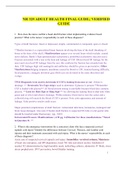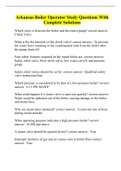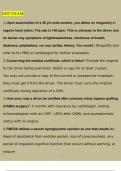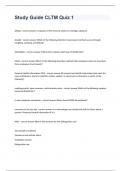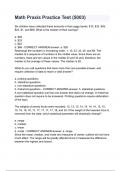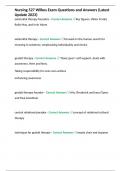Tentamen (uitwerkingen)
BTEC Applied Science Unit 9B: Homeostatic control of body systems
- Vak
- Instelling
BTEC Applied Science Unit 9B: Homeostatic control of body systems. Homeostasis calls for a high degree of monitoring and control; to detect internal and external changes and respond stimuli, hormones and nervous system communicate to bring about changes that brings symptoms back to the correct le...
[Meer zien]





